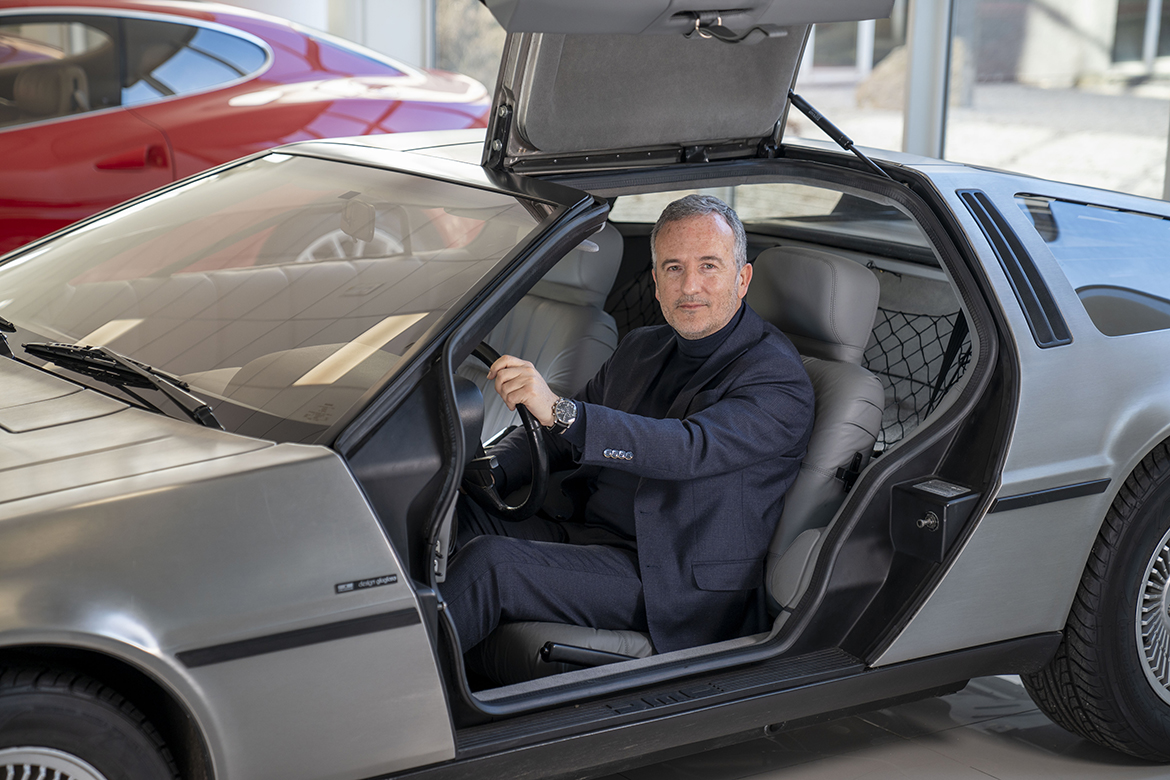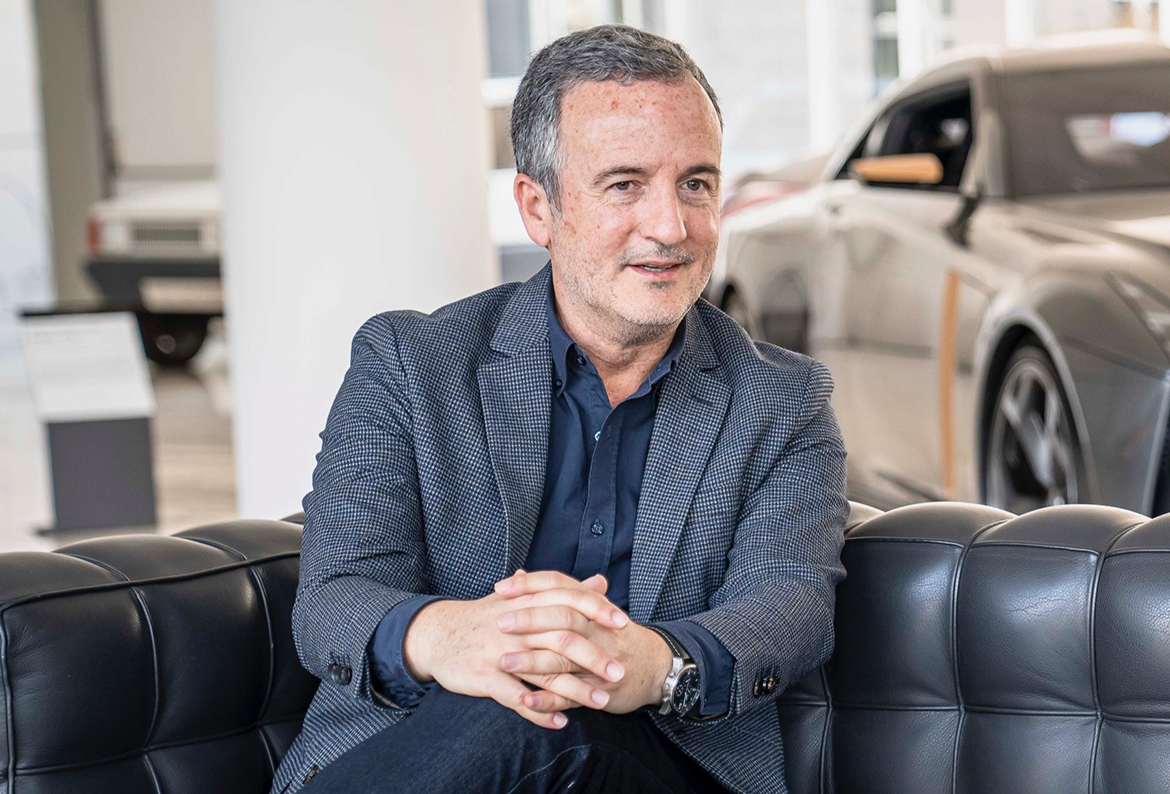Joaquin Garcia took over as Head of Design at Italdesign in March. We met up with him at the firm’s Moncalieri headquarters to look back over his 25-year career and get a sense of his vision at a time of great transformation for the company and the car design sector in general. Garcia is a 49-year-old Spaniard who graduated in Industrial Design from Cardenal Herrera University in Valencia, his hometown. He took a Master’s degree in Vehicle Design at the Royal College of Arts in London, “an experience that completely reshaped my perspective, blew open my mind, made me inclusive and curious to explore other cultures”. His first job was at Renault Design, “probably the company that permitted the most creative freedom of all those I have worked for. Those were the golden years of Patrick Le Quément and other greats. When I arrived and spotted the production Avantime, I asked if it was the next showcar. I was very young”, he said, smiling. After a stint in industrial design, he worked at Ford’s style centre in Cologne for two years: “There I learnt what market research and clinic tests were all about, customer feedback was taken very seriously. An alternate reality to Renault where everything was possible; all very enlightening”. There followed a spell in Barcelona with Erwin Himmel at Fuore Design: “I was in charge of the team and we didn’t just design cars. Unfortunately the studio had to close down”. In 2010, he took the opportunity offered by Jozef Kaban, his fellow student at the RCA, to join Skoda design and moved with his family to the Czech Republic: “I learned a lot from the local culture, which was very product-focused, and I also grew as a manager, a crucial step for a creative. Under Jozef’s leadership we turned Skoda design around and it became a truly global brand”. Five years later, Alejandro Mesonero invited him to join Seat and he returned to Spain: “Those were intense years when Cupra was born and I became head of exterior design for both brands. Alejandro is a passionate and very cultivated designer, I learnt so much from him, and having Luca De Meo as president was a fantastic experience too. He’s a true visionary. Sometimes it’s not easy to keep up with him because he doesn’t follow the beaten track, but he managed to instil the ability to think big in the team. When he left, the company had been completely transformed”.
Joaquin Garcia’s interests have always included Asian culture: “I was given the opportunity to work with the Volkswagen Group’s facilities in China, and at the time I toyed with the idea of moving there”. He accepted an offer from the Chinese manufacturer Nio to work first in Munich and later in Shanghai, but the pandemic broke out and the experience came to an abrupt end. “I am happy to be back in the Volkswagen group, which I consider to be among the most professional and reliable”, he says, returning to the present. “For me it is an honour to work at Italdesign. You breathe history; some of the greatest achievements in the world of car design have originated here. I am an open and caring sort of character and I love to hear the stories of the team that worked with Giorgetto Giugiaro. It makes you really appreciate how much experience has been accumulated in this company over the years”. Now we look to the future of an Italdesign whose essential role as a service provider has been completely transformed. Motor Shows mostly only survive in the East, so much so that, as managing director Antonio Casu observes, while in the past you attracted customers with showcars, today virtual reality with immersive technologies is much more effective and immediate. Engineering turnover is dominant and continues to grow, but it’s time for design to get going again too. “Our heritage is huge, but the past can be overwhelming”, Garcia continues. “We know that design at the moment is a small part compared to engineering, my goal is to grow the business”. The basic strategy is co-creating. “There are few companies like Italdesign that can manage the entire design process, to the point of creating a brand from scratch. The first rule is mutual respect. In co-creating there is no imposition: you open a discussion, identify opportunities and organise a team. There is also a lot of listening, we know that needs have changed, just as we service providers have evolved. We used to simply offer solutions, now there is a sea change. We have to sell ourselves as partners of innovation”.
To innovate you have to experiment: “We can support our clients if they take a ‘fail fast’ approach, an expression that may scare people but which personally I like. Pixar Studio used it to describe how it works: don’t be afraid to explore new territories while there is still time to change course, otherwise no real progress will ever be made”. An indispensable attitude with technology moving at such a dizzy pace but the future remains undefined, as for example in the case of autonomous driving. “It’s certainly coming but we don’t know when. We designers have to design this future while the rules for establishing responsibility in the event of an accident are defined. Technology remains the determining factor, however. In the early 2000s with Erwin Himmel we worked for Panasonic and made a beautiful proposal for a mobile phone. It ended up being binned because the iPhone had made its appearance just before: Apple had won. Not because of the design, although it’s a beautiful object, but because of the technology that made the difference”. Man must remain central to any project, Garcia reassures us. “For many years, car design has often ignored people. We have aimed at soothing our own ego, that of the president or the market rather than the user of the vehicle. The “human-centric” approach must be real and not just the title of a slide in a presentation. Chinese companies make the “user” hugely important and this in my opinion is a lesson to be learnt”. And then there is artificial intelligence and the metaverse. “AI is a tool that will radically change processes in terms of the speed and resources needed to complete a job. It has to be learned and not everyone can use it without proper training. We did a successful pilot test with a client, but we are professionals and as service providers we have to contractually guarantee the originality of the project and intellectual property. This aspect too is going to be a challenge and our legal team is already at work”. Things are different for the metaverse: “It appeals to our human nature, to our ability to dream figuratively. It can become an extension of our existence and as a father of two I want it to do so in a positive sense. I would not like to see my kids living an unreal life in the future. But I’m not against technology. On the contrary, the metaverse offers creatives the chance not to worry about costs, feasibility or production issues. It’s certainly a new world waiting to be built and design must be part of this great opportunity”.













